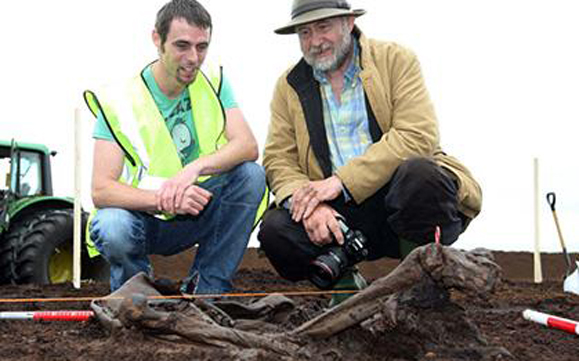The naturally mummified body of a young adult male found in the Cúl na Móna bog in Cashel, Co. Laois is officially the oldest fleshed human remains ever discovered in the world. It dates back roughly 4,000 years, or 700 years before Egypt’s Tutankhamun.
The body, discovered in 2011 by a Bord na Móna worker, was originally presumed to be that of a young Iron Age female and estimated to be about as old as other “bog bodies” (c. 500 BC – AD 400). But recently released radiocarbon dating results have dated the body to the early Bronze Age.
Eamonn Kelly, the keeper of Irish antiquities at the National Museum of Ireland said that they took three separate samples, which were sent to two different labs, and all of the results came back at 2000 BC.
Moreover, because of blade wounds on the body’s back and a broken arm, Kelly believes the body was royal-born and sacrificed as part of a ritual ceremony. Kelly and his fellow researchers believe it is not unlikely such bodies belong to “kings that failed in their kingship and were been sacrificed as a consequence,” he told the Independent.
The discovery of the age of the body means that much more can be studied about the relationship of Bronze Age Ireland to later millennia. “It seems to be the same type of ritual that we’ve observed in later Iron Age finds. What’s surprising here is that it’s so much earlier,” Kelly said.
Bog Body from Laois Officially World’s Oldest


Leave a Reply